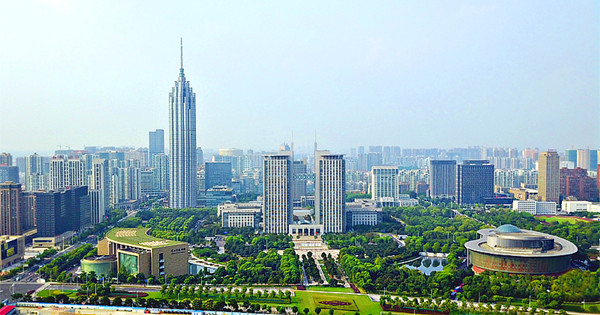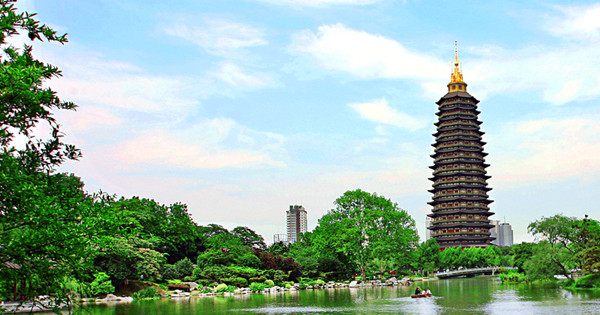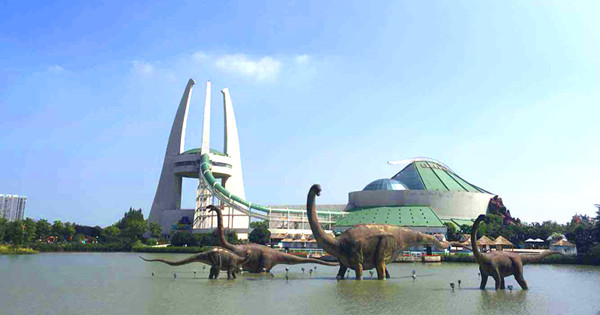Changzhou
Changzhou, also known as "Longcheng", is a prefecture-level city in southern Jiangsu province which covers a total area of 4,385 square kilometers and had a permanent population of 4.74 million in 2019. It has five districts and one county-level city under its governance.
The city is located on the southern banks of the Yangtze River on one side and on the other side borders the beautiful shores of Taihu Lake, the third largest freshwater lake in China. Situated in the affluent Yangtze River Delta region, Changzhou has also formed an urban cluster with its neighboring cities Suzhou and Wuxi and enjoys convenient transport to the provincial capital of Nanjing and the coastal mega-metropolis of Shanghai.
Changzhou also has the third civil aviation in Jiangsu which has opened domestic and international flights connecting 20 countries and cities such as Beijing, Hong Kong, Taipei, Guangzhou, Shenzhen, Chengdu and Dalian – and abroad, South Korea, Laos, Thailand, Japan and Indonesia.
Changzhou lies in the monsoon climate area of the north subtropical zone. The four seasons are distinct here, with very hot and muggy summers, cold and damp winters and in between, a spring and fall of reasonable length.

An overview of Changzhou in East China's Jiangsu province [Photo/changzhou.gov.cn]
Economy
Changzhou in 2020 saw its GDP grow by 4.50 percent year-on-year to 780.53 billion yuan ($119.97), its public finance budget increase by 6.5 percent, investment in fixed assets and total retail sales rise by around 12 percent, per capita disposable income of urban and rural residents gaining nearly 9 percent and the total volume of foreign trade as well as foreign trade achieving moderate growth.
Changzhou's traditional role has been that of a commercial center and in particular a distribution center for agricultural products, which were shipped by the Grand Canal to the north and later, to Shanghai. The city began to develop a cotton textile industry in the 1920s, and cotton mills were established in the late 1930s, when wartime Japanese attacks drove many Chinese businesses to invest outside Shanghai.
The city has remained a textile center and the most important location in Jiangsu for weaving. It also has large food-processing plants as well as flour-milling, rice-polishing and oil-pressing industries. After 1949 it also developed as a center for the engineering industry. Qishuyan, some 10 kilometers southeast of Changzhou, has one of the largest locomotive and rolling stock plants in China. Other engineering works in Changzhou produce diesel engines, generators, transformers -- along with agricultural and textile machinery. At the time of the Great Leap Forward in 1958, a steel plant was also built to provide raw materials for heavy industry.

Tianning Temple has a history stretching back over 1,350 years and is the highest Buddhist pagoda in the world. [Photo/changzhou.gov.cn]
History & Culture
Changzhou is an ancient historical and cultural city, with a recorded history of 3,200 years. In the late Spring and Autumn Period (547 BC), Ji Zha, fourth son of the King of Wu, had Yanling as his principality, which was the place name of ancient Changzhou.
In the fifth year of the Emperor Gaozu's reign during the West Han Dynasty (202 BC), the place name was changed to Piling. In the second year of Emperor Wu during the West Jin Dynasty (281 BC), it become Piling Jun (county). During the various dynasties, Changzhou had such names as Yanling, Piling, Pitan, Jinling, Changchun, Changzhou and Wujin. In the ninth year of the Emperor Wen's reign in the Sui Dynasty (589 AD), Changzhou got its present name. In 1949, the municipal government was founded.
Changzhou is home to numerous historical sites and cultural relics, such as the Neolithic Site in Xudun Village, the Ruins of Yancheng in the Spring and Autumn Period, the Tianning Temple, Hongmei Pavilion, Wenbi Pagoda, Tianmu Lake Resort and China Dinosaur Park.
A group of renowned figures have been nurtured and brought up in Changzhou, including Ji Zha, Xiao Tong, Tang Jingchuan, Qu Qiubai, Zhang Tailei, Hua Luogeng, Liu Guojun, and Liu Haisu.
Local gastronomic and handicraft specialties in Changzhou include dried radish, sesame cake, roast goose, wild mountain bamboo shoots, hairy crabs, chestnuts, bamboo carvings, embroidery, brick carvings and craft paintings.

China Dinosaur Park [Photo/changzhou.gov.cn]


 Jiangsu, Our home away from home
Jiangsu, Our home away from home
